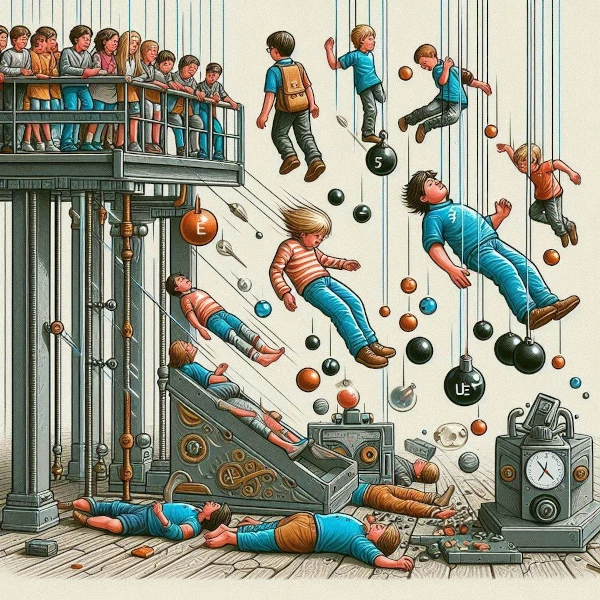
Image description: Illustration of an experiment where objects fall at the same speed despite having different masses. Image credit: AI
Have you ever heard of the equivalence principle in physics? It’s a truly fascinating idea that helps us understand how gravity and acceleration work. This principle helped a great scientist, Albert Einstein (1879-1955), to better understand gravity. Thanks to it, we now know that gravity is not just a force that pulls objects, but it's also related to how space and time are curved.
The equivalence principle says that gravity and acceleration are somewhat the same. For example, if you're in a falling elevator, you wouldn’t feel your weight anymore, as if gravity didn’t exist. This principle is super important for understanding Einstein’s theory of relativity.
It was Galileo Galilei (1564-1642) who, a long time ago, conducted an experiment with objects of different masses. He showed that, without air resistance, all objects fall at the same speed, no matter their weight! This later led Albert Einstein to develop his famous equivalence principle.
Imagine you're in a rocket accelerating through space, far from any planet. If you jump in the air, you would fall back to the floor of the rocket just like on Earth, due to the acceleration. The same would happen if you were on Earth, because of gravity. Basically, the sensation of falling is the same, whether it’s due to gravity or acceleration.
This principle is super important because it allowed Einstein to develop his theory of general relativity. Thanks to this theory, we can understand incredible things like the curvature of space-time, black holes, and even how the universe expands!
The equivalence principle is a key idea in physics. It teaches us that gravity and acceleration are actually very similar, and this helps us understand how the universe works. In other words, the equivalence principle says that the sensation of being pushed down in an elevator and the feeling of being pulled by the Earth are the same. Thanks to simple ideas like this, we’ve been able to advance in science and discover so many fascinating things about our world and space!